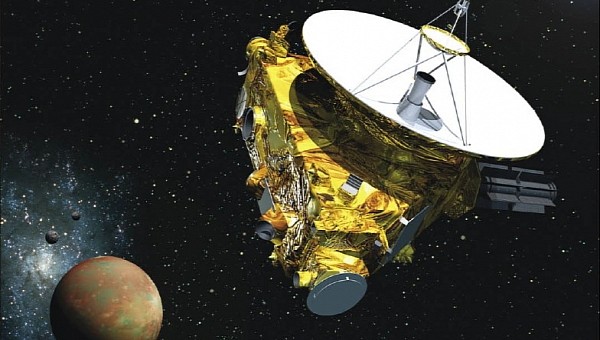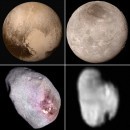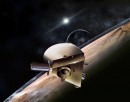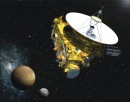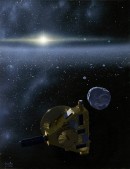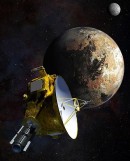If NASA's New Horizons deep space observation probe were playing a video game, you could say it's at the stage where it's defeated the game's final boss and is about to embark on a side quest that takes as much time to complete as the game itself.
Launched nearly 17 years ago in January 2006, New Horizons famously captured what is probably the most vivid pictures mankind will likely ever have of Pluto with its flyby in the summer of 2015. New information and data from the probe's observations from this flyby are still being processed to this day.
Even so, New Horizons is setting out to see just how far it can go before it runs out of fuel, power, or both. By current projections, the spacecraft covers as much as 300 million miles per year. With the probe's extended second mission going into effect this past October, that's a lot of ground to cover in the name of exploration. First things first, the probe will begin the new year by entering a deep hibernation sleep that lasts until, at the very least, the following March.
During this time, the space probe will enter a period where its systems perform a bare minimum of function while it conserves the power and fuel it will need as it transits the fringes of the outer Solar System. Once this hibernation is finished, New Horizons will begin an intense series of scientific experiments. In hopes of uncovering the chemical composition of a mostly unexplored region of the cosmos.
As of 2022, only the Voyager probes 1 and 2 are the only human-built objects operating from a farther distance than New Horizons. The older Pioneer 10 and 11 missions launched in the 1970s have also more than likely exited our local Solar System, though neither of the two has been in contact with Earth since the early 2000s.
That said, the next 24 months of New Horizon's operation are sure to only grow its mythos even further by entering an extra-special class of space probes operating in what scientists call the Kuiper Belt and the outer heliosphere.
As for how long New Horizons can transmit scientific data, NASA's team at the Johns Hopkins Applied Physics Laboratory, New Horizons has plenty of proverbial gas left in the tank. At least enough power to operate its vital sub-systems well past the 2020s and 2030s, possibly even into the 2040s and 2050s. With all that time left to explore planetoid-like objects beyond just Pluto, it's safe to assume our understanding of our Solar System will be profoundly different than it was when this probe launched.
Check back soon for more from Celebration Month 2022 right here on autoevolution.
Even so, New Horizons is setting out to see just how far it can go before it runs out of fuel, power, or both. By current projections, the spacecraft covers as much as 300 million miles per year. With the probe's extended second mission going into effect this past October, that's a lot of ground to cover in the name of exploration. First things first, the probe will begin the new year by entering a deep hibernation sleep that lasts until, at the very least, the following March.
During this time, the space probe will enter a period where its systems perform a bare minimum of function while it conserves the power and fuel it will need as it transits the fringes of the outer Solar System. Once this hibernation is finished, New Horizons will begin an intense series of scientific experiments. In hopes of uncovering the chemical composition of a mostly unexplored region of the cosmos.
As of 2022, only the Voyager probes 1 and 2 are the only human-built objects operating from a farther distance than New Horizons. The older Pioneer 10 and 11 missions launched in the 1970s have also more than likely exited our local Solar System, though neither of the two has been in contact with Earth since the early 2000s.
That said, the next 24 months of New Horizon's operation are sure to only grow its mythos even further by entering an extra-special class of space probes operating in what scientists call the Kuiper Belt and the outer heliosphere.
As for how long New Horizons can transmit scientific data, NASA's team at the Johns Hopkins Applied Physics Laboratory, New Horizons has plenty of proverbial gas left in the tank. At least enough power to operate its vital sub-systems well past the 2020s and 2030s, possibly even into the 2040s and 2050s. With all that time left to explore planetoid-like objects beyond just Pluto, it's safe to assume our understanding of our Solar System will be profoundly different than it was when this probe launched.
Check back soon for more from Celebration Month 2022 right here on autoevolution.
